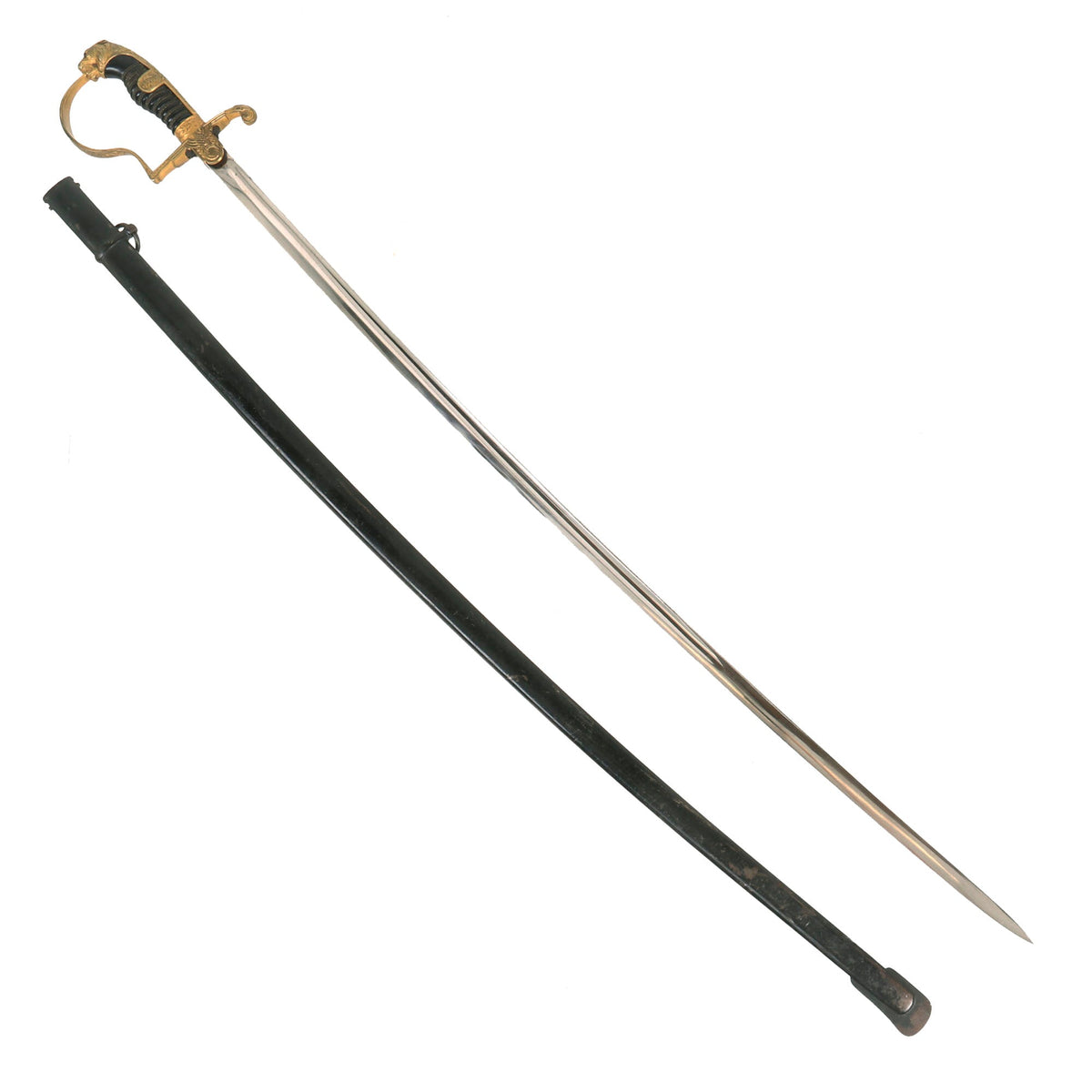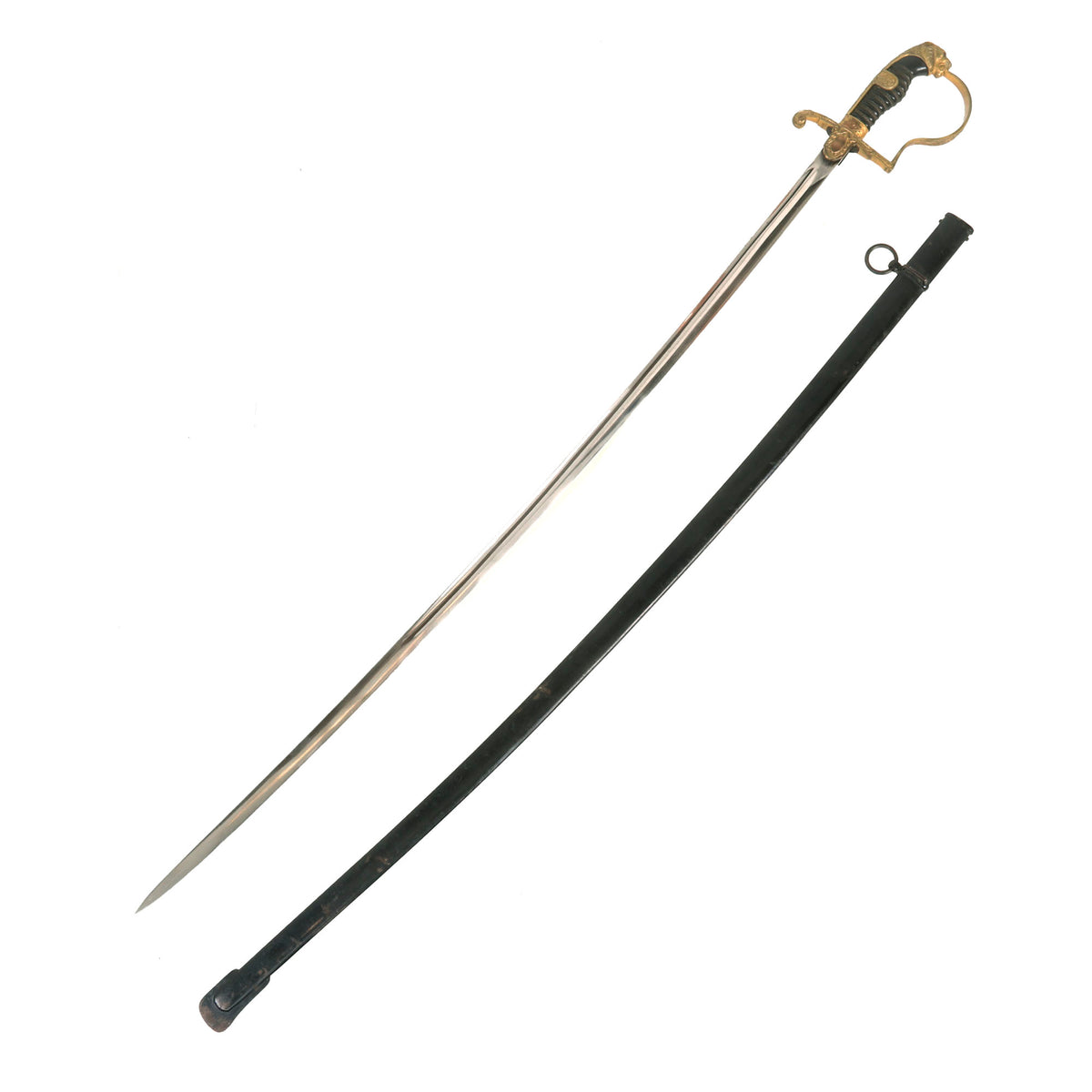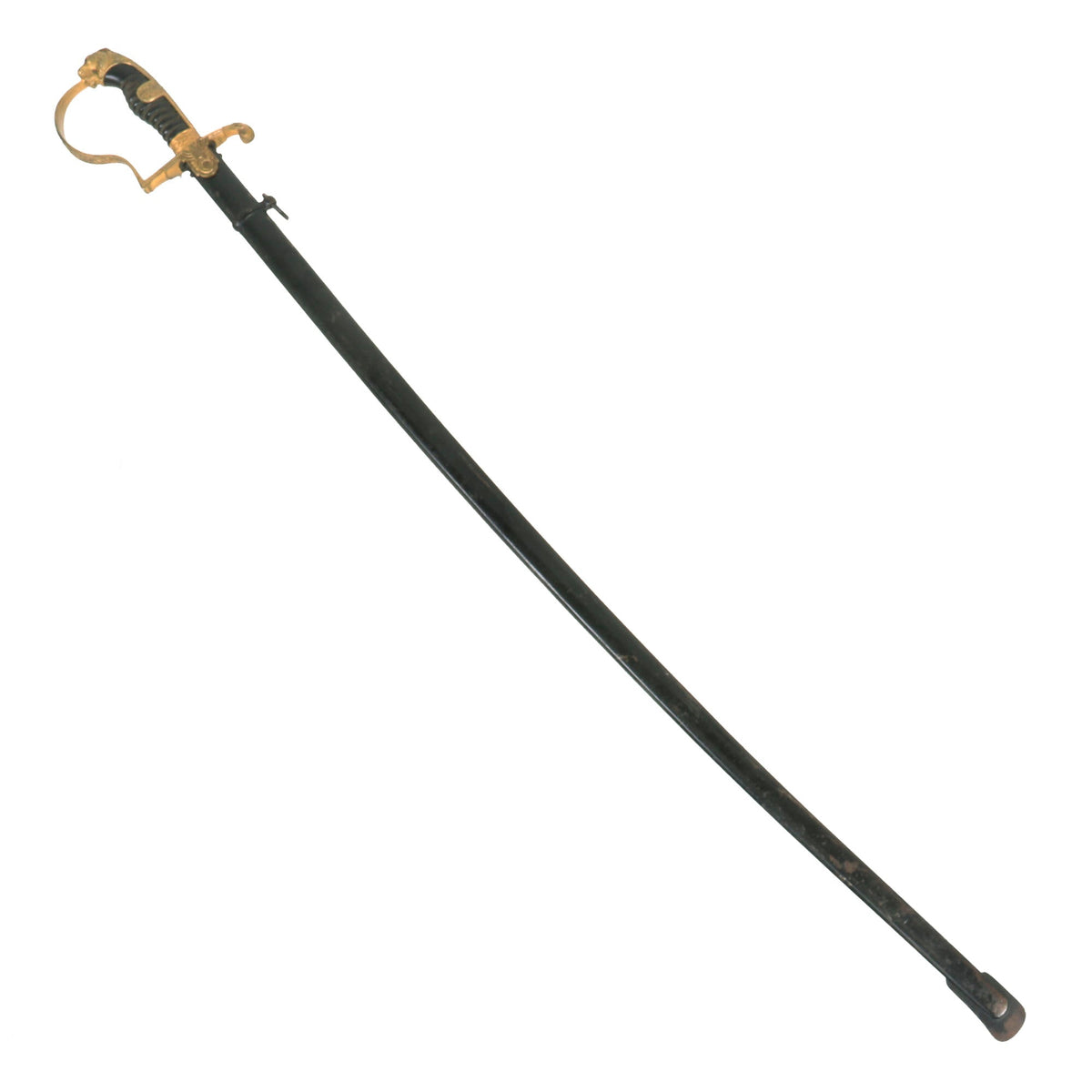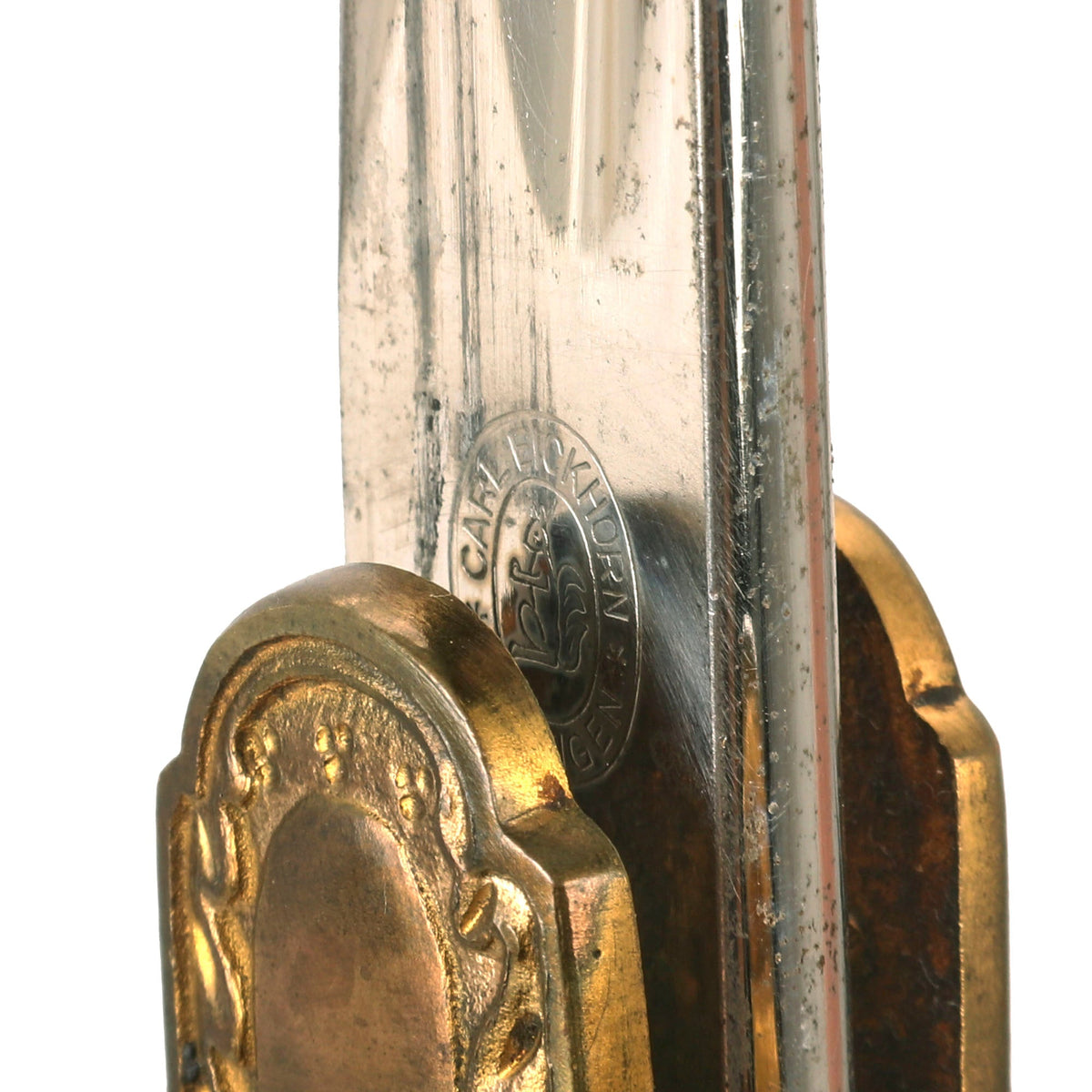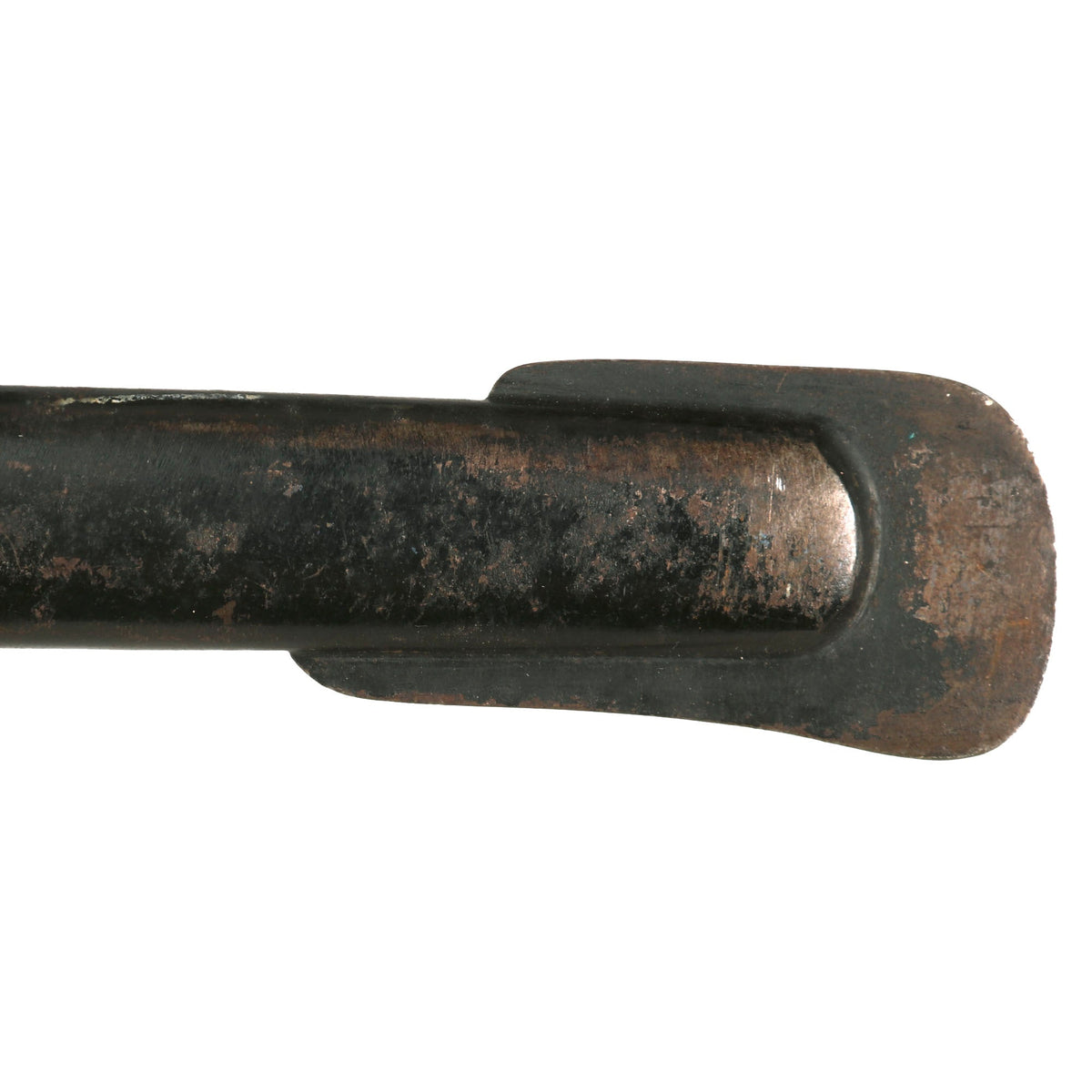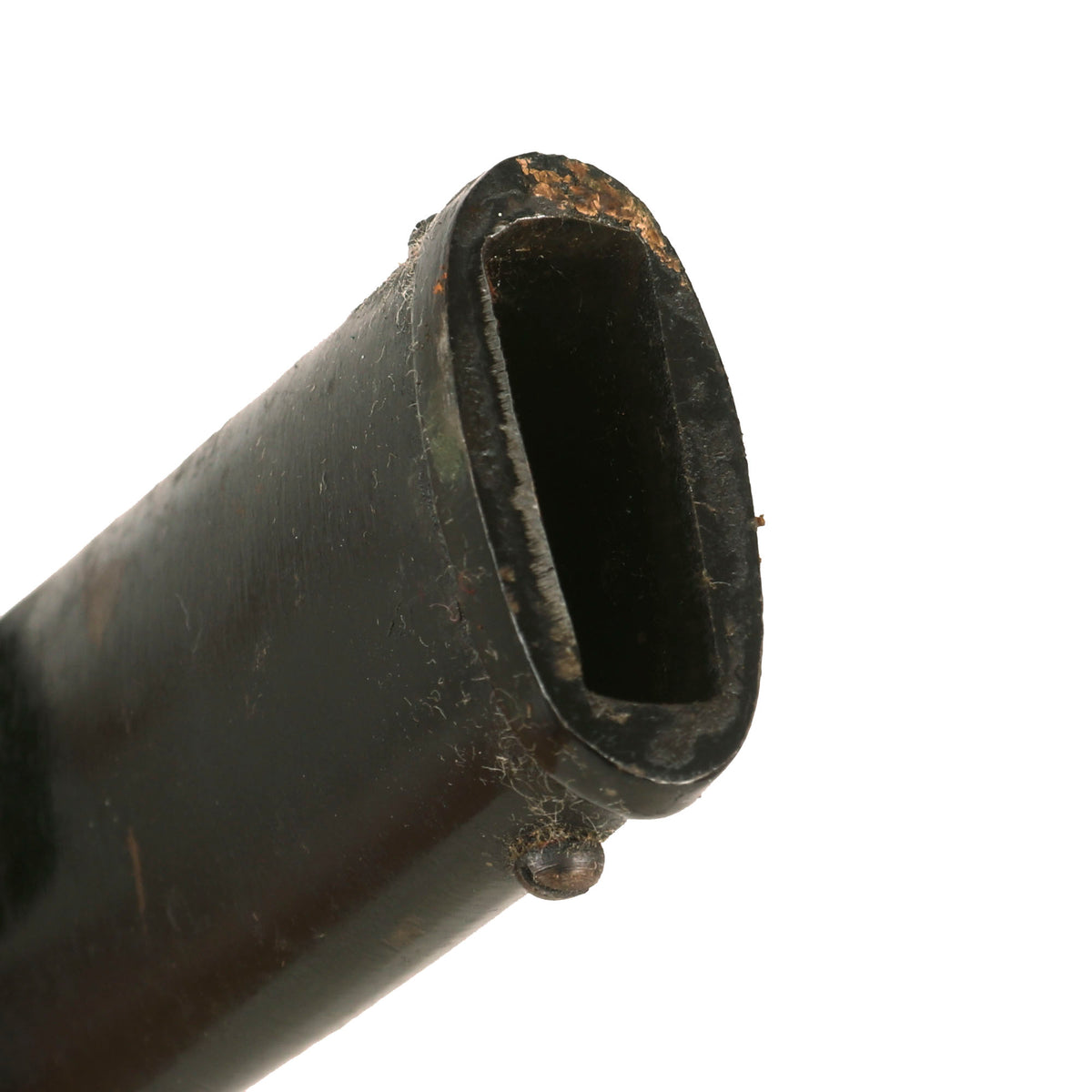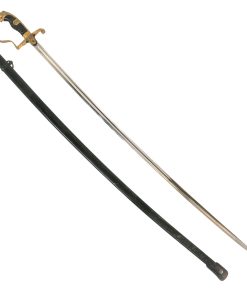Original German WWII Early Model 1695 Army Officer’s Lion Head Sword by Carl Eickhorn with Scabbard – 1933-35 Trademark Original Items
$ 595,00 $ 178,50
Original Item: Only One Available. This is a beautiful classic German WWII Model 1695 Heer (Army) Officer’s sword, made by the legendary Solingen-based firm of Carl Eickhorn. This Army Lion Head Sword has a hilt constructed of the classic gilt brass alloy, not the later war plated aluminum. It still features about 75% of the gilding intact, with other areas showing oxidized brass. It is a very beautiful sword, and is really in great condition, a prime addition to any display or collection. For some reason Eickhorn did not include the Model 1695 in their “Field Marshall” series, but due to the similarities, many feel that a Field Marshall sword collection is not complete without one of these swords. It comes with an original steel scabbard, which is in very good shape, showing just a bit of bending.
The Lion head is in choice condition, with lots of hand engraving throughout the muzzle, snout, eyes, and mane. The backstrap has elegant raised oak leaves and acorns which extend out to the grip tabs. The “P” guard and ferrule have the same oak leaf motif, and both remain in choice condition. The crossguard extends downward with a curlicue quillon. In the center chappe (rainguard) is an Art Deco style eagle clutching a wreathed mobile swas. The detailing are extraordinary throughout the guard. The reverse chappe has the usual raised plain seal to accept a monogram, but is unmarked.
The grip is the correct black celluloid-over-wood base, and in very good condition. It is wrapped with a skein of 6 brass wires, twisted in pairs, with the center pair larger than the surrounding two. The wires are now a bit loose and out of place. The celluloid is in very good shape, with minimal shrinkage, though some parts have cracked and flaked off on the right side. The grip, cross guard, and back strap are still tight on the tang, while the ferrule has just a bit of wiggle.
The 33 ¼ inch blade of this example is in very good condition, with the nickel plating very well retained and showing just a bit of wear and scattered light oxidation. The blade has correctly not been sharpened, and the edge and tip are fully intact, so it has not been damaged by being swung around, as so many bring backs were. It presents very well, and is definitely a great example of this type.
The reverse ricasso is stamped with the Eickhorn trademark “losenge” logo: a double oval surrounding a seated squirrel holding a sword, with CARL EICKHORN / SOLINGEN surrounding the squirrel trademark. During the 1933-1935 period the company used a variety of very similar but not identical oval trademarks like this. The chappe / raingard partially covers this, but we can still see all of it, though it is hard to photograph. The original leather blade buffer is in place, and in good shape. The top of the cross guard is also stamped GES. GESCH., short for Gesetzlich Geschützt (Protected by Law), indicating that this was a trademarked design.
Carl Eickhorn is a legendary maker from Solingen, the famous “City of Blades” in Western Germany. According to J. Anthony Carter’s book, GERMAN KNIFE AND SWORD MAKERS, this company was founded in 1865 by Carl Eickhorn, and is arguably the most famous of all Solingen makers. Not only could the family trace their history back 500 years, but they could also demonstrate involvement in the hardening and grinding industries for the same period. Truly the nobility of Solingen Edged weapon dynasties. Eickhorn edged weapons are the most desirable of all makers.
The scabbard of this example still has good original factory black lacquer, which is retained at about 75%, showing some degradation and oxidation overall. There is the expected checking and crazing in the finish, and the steel body also shows a bit of a “dog leg” bend near the center, which does not interfere with sheathing the blade. The sword retains the original hanger ring as well as the rectangular loop for “hitching up” the sword.
Overall a lovely condition high quality sword from the most legendary of all German sword makers, based in Solingen, the “City of Blades” in Eastern Germany. Complete with scabbard and ready to display!
Specifications:
Overall length: 38 ¼”
Blade length: 33 ¼”
Blade Style: Single Edged with Fuller
Guard dimensions: 5″ width x 4 ½” length
Scabbard Length: 34 ¼”
The German Army (German: Heer), was the land forces component of the Wehrmacht, the German armed forces, from 1935 to 1945. The Wehrmacht also included the Kriegsmarine (Navy) and the Luftwaffe (Air Force). During World War II, a total of about 15 million soldiers served in the German Army, of whom about seven million became casualties. Separate from the army, the Waffen-SS (Armed SS) was a multi-ethnic and multi-national military force of the Third Reich. Growing from three regiments to over 38 divisions during World War II, it served alongside the army but was never formally part of it.
Only 17 months after AH announced publicly the rearmament program, the Army reached its projected goal of 36 divisions. During the autumn of 1937, two more corps were formed. In 1938, four additional corps were formed with the inclusion of the five divisions of the Austrian Army after the Anschluss in March. During the period of its expansion by Adolf AH, the German Army continued to develop concepts pioneered during World War I, combining ground (Heer) and air (Luftwaffe) assets into combined arms teams. Coupled with operational and tactical methods such as encirclements and the “battle of annihilation”, the German military managed quick victories in the two initial years of World War II, prompting the use of the word Blitzkrieg (literally lightning war, meaning lightning-fast war) for the techniques used.
The German Army entered the war with a majority of its infantry formations relying on the horse for transportation. The infantry remained foot soldiers throughout the war; artillery also remained primarily horse-drawn. The motorized formations received much attention in the world press in the opening years of the war, and were cited as the main reason for the success of the German invasions of Poland (September 1939), Norway and Denmark (April 1940), Belgium, France and Netherlands (May 1940), Yugoslavia (April 1941) and the early campaigns in the Soviet Union (June 1941). However their motorized and tank formations accounted for only 20% of the Heer’s capacity at their peak strength.
Fast Shipping with Professional Packaging
Thanks to our longstanding association with UPS FedEx DHL, and other major international carriers, we are able to provide a range of shipping options. Our warehouse staff is expertly trained and will wrap your products according to our exact and precise specifications. Prior to shipping, your goods will be thoroughly examined and securely secured. We ship to thousands clients each day across multiple countries. This shows how we're dedicated to be the largest retailer on the internet. Warehouses and distribution centres can be located throughout Europe as well as the USA.
Note: Orders with more than one item will be assigned a processing date depending on the item.
Before shipping before shipping, we'll conduct a thorough inspection of the items you have ordered. Today, the majority of orders will be delivered within 48 hours. The delivery time will be between 3-7 days.
Returns
The stock is dynamic and we cannot completely manage it because multiple stakeholders are involved, including our factory and warehouse. So the actual stock may alter at any time. It's possible that you may not receive your order once the order has been made.
Our policy is valid for a period of 30 days. If you don't receive the product within 30 days, we are not able to issue a refund or an exchange.
You can only return an item if it is unused and in the same state as the day you received it. You must have the item in its original packaging.
Related products
Uncategorized
Uncategorized
Uncategorized
Uncategorized
Uncategorized
Uncategorized
Uncategorized
Uncategorized
Uncategorized
Armoured Fighting Vehicles of the World: AFVs of World War One (Hardcover Book) New Made Items
Uncategorized
Uncategorized
Uncategorized
Angolan Rebel 1970s era 60mm Inert Display Mortar from Angolan Civil War Original Items
Uncategorized
Uncategorized
Uncategorized
Australian WWII Owen MK1 Machine Carbine SMG Custom Fabricated Replica with Sling Original Items
Uncategorized
Uncategorized
Armored Burgonet Helmet & Polearm from Scottish Castle Leith Hall Circa 1700 Original Items
Uncategorized
Uncategorized
